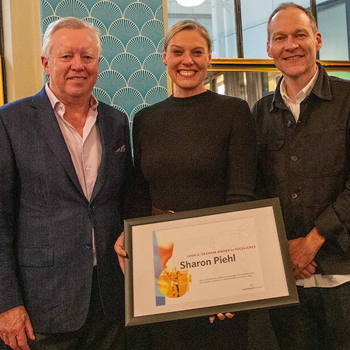Personal Lessons I’ve Learned About The Media
A solid relationship with the media is possibly the biggest selling point for any PR agency. Being in the business of generating valuable publicity, having regular and personal contact with a journalist and being aware of what catches their interest can transform a story or campaign from ‘good’ to ‘great’.
Relationships of this nature are developed over time, requiring commitment from both sides to honour their promises and to do their utmost to assist where possible. Mutual respect and trust should not be considered an eventual right, but a well-earned privilege.
During a Fleishman-Hillard visit to The Star’s office, staff members had the opportunity to meet the newspaper’s executive editor, Kevin Ritchie, who gave useful pointers on working with the media. However the one that resonated the most was about getting to know the journalist and understanding what really grabs their attention.
There are ways that we can start to cultivate these relationships and in my short career in PR, these are the few lessons I’ve gained:
Get to know the story behind the newsrooms.
The Guardian, New York Times – every news publication is bound to an agenda. For instance the Mail & Guardian, probably one of South Africa’s most trusted investigative weekly publications, takes a confrontational approach in its endeavour to report on the story behind the story. This is borne from the publication’s origination from two liberal publications, The Rand Daily Mail and Sunday Express.
The publication became prominent during the Apartheid years and has since continued its legacy of reporting without bias – and with that, upping the game on investigative journalism in South Africa.
Knowing the background to each newsroom renders an understanding of the news style and removes the blunder of sending irrelevant information, amongst others.
Know what makes news
A new product or interesting research may be a ‘nice to have’ but does this make it news? Well this depends on a number of factors.
Our client, Visa, released a ‘Connecting with the Millennials’ study that focused on 18-28 year olds’ and their viewpoints on spending by card over cash, how they perceive technology in their daily lives and the way they manage their personal finances. We were aware that we needed to carve our approach carefully as similar research had been released previously. Finding the selling point involved interpreting the results and relaying these in an appealing manner. We also looked to current news for further ideas, using concerns expressed by economists about South Africans and their poor savings and tying this back to the research finding that millennials are less inclined to set a portion of their monthly income aside with only a small percentage saving for retirement and home purchases.
Unless there’s depth, relevance and a response to how information will help readers, a story will not necessarily make the news.
Personalising content
It’s no secret that newsrooms around the world are increasingly coming under pressure thanks to cut revenues and the global economic situation. And with that, editorial space is likely to become even more competitive. This is where personalising content can be an advantage. Shaping content around the publication that you are targeting and the journalist’s interests can be key to separating a press release from the rest. The same goes for motivating interviews.
Finally, it’s always good to broaden your knowledge. Getting acquainted with the trends, the political environment and the business environment reflects a concerted effort to become a part of the news.
Written by Leigh-Anne Sa Joe
Find Out More
-
Digital Insights Bulletin - October 2024
October 31, 2024
-
Sharon Piehl Wins 32nd Annual John D. Graham Award for Excellence
October 25, 2024
-
Digital Insights Bulletin - September 2024
September 30, 2024


